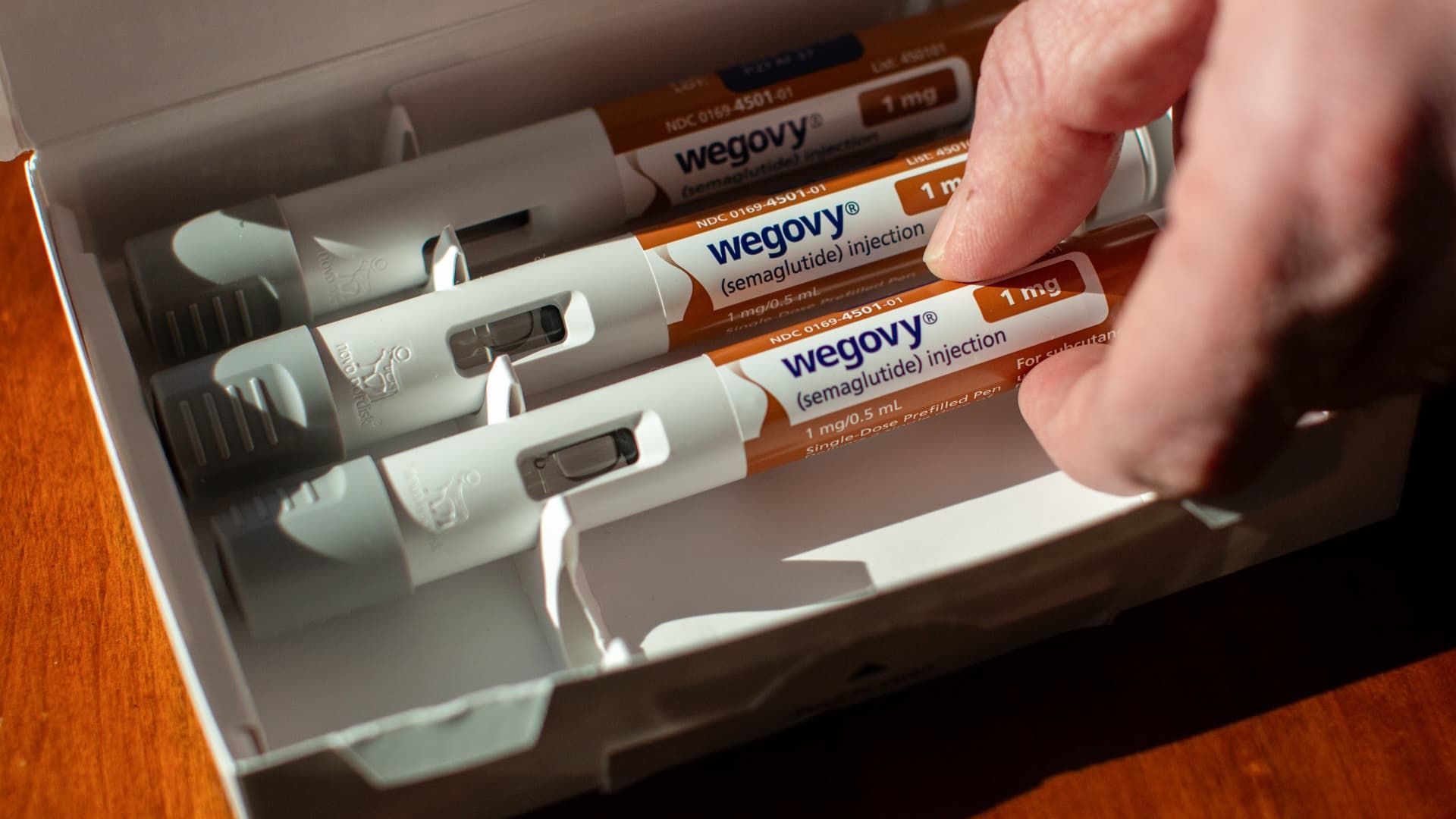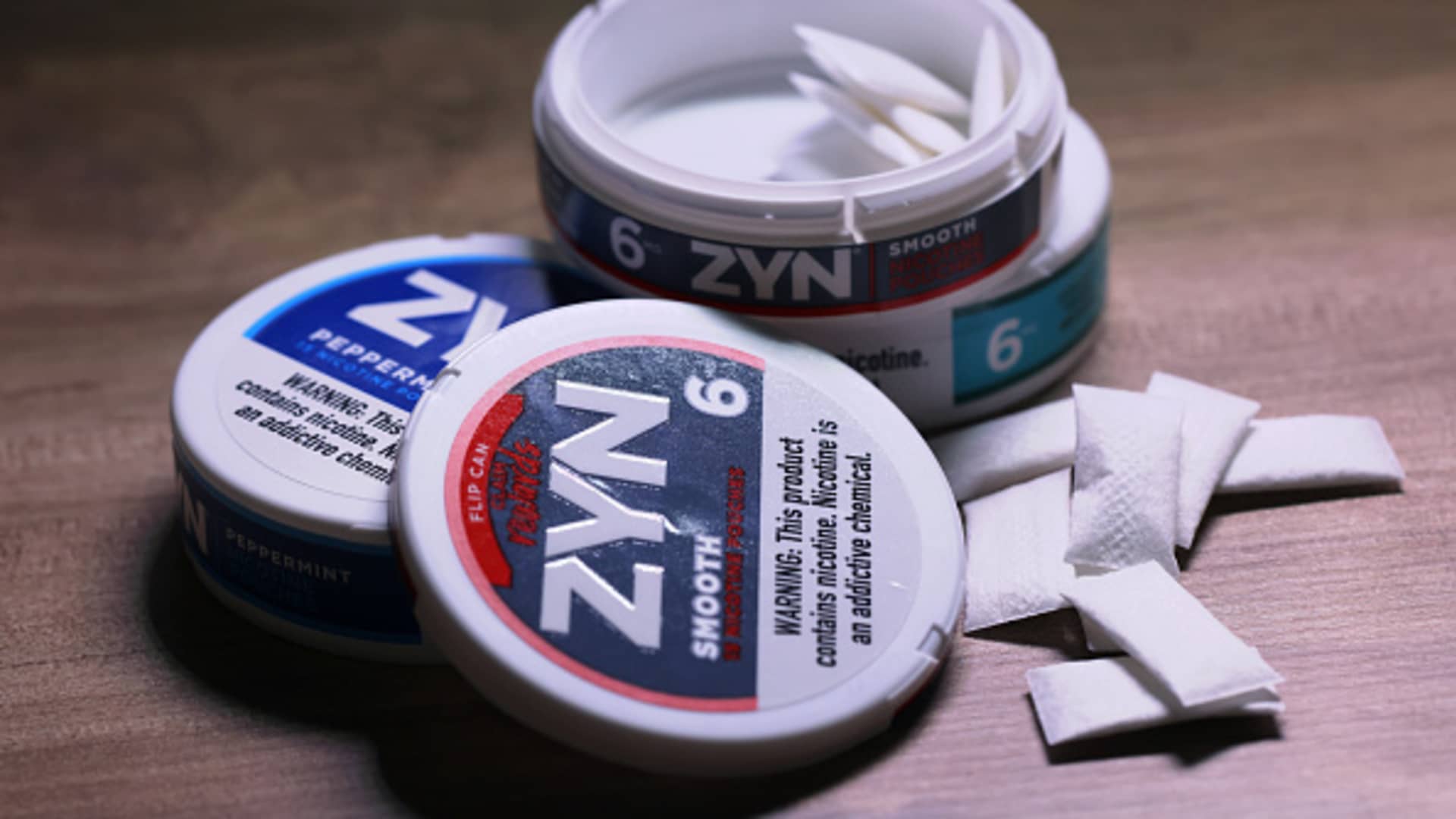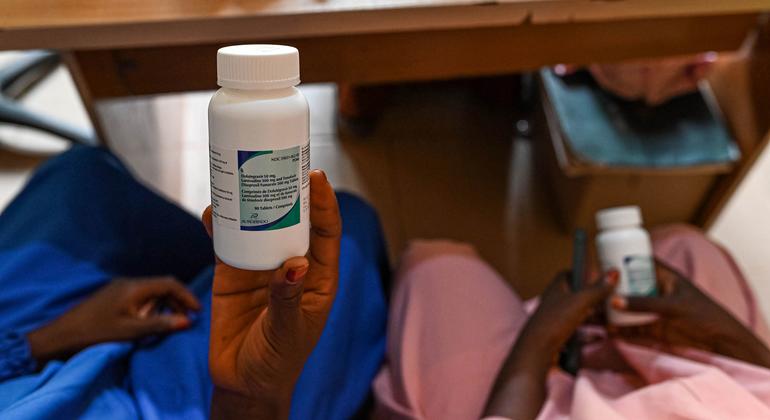Wegovy injection pens laid out in Waterbury, Vermont, USA, on Monday, April 28, 2025.
Shelby Knowles | Bloomberg | fake images
President Donald Trump reached historic agreements on Thursday with Eli Lilly and Nordisk to reduce the prices of their successful weight loss drugs.
Under the agreements, the monthly out-of-pocket cost for the popular shots and upcoming pills could range from $50 to $350 starting next year, depending on the dosage and a patient's insurance coverage, Trump administration officials said.
Existing GLP-1s, including Eli Lilly's Zepbound obesity shot and Novo Nordisk's competitor Wegovy, have list prices above $1,000 a month, which has prevented many patients from taking them. Both companies have introduced lower-cost options for people who pay cash and purchase medications directly through their websites.
But the agreements with Trump, as part of his “most favored nation” policy, take those efforts to expand access even further. Below is how much weight-loss drugs could cost patients under the new deals, based on details shared so far.
State health insurance
Medicare has covered GLP-1 medications for diabetes and some other medical conditions: for example, Wegovy to reduce cardiovascular risks. But under the new agreements, Medicare will begin covering obesity drugs for the first time starting in mid-2026, potentially allowing more seniors to qualify for them and spur more private insurers to cover them.
Certain Medicare patients will pay a $50 copay per month for all approved uses of GLP-1 medications, including the treatment of diabetes and obesity.
But the Trump administration is imposing some limitations on which Medicare beneficiaries will be eligible to receive GLP-1 for obesity and cardiovascular and metabolic benefits.
Patients are eligible if they belong to these three cohorts:
- The first includes those who are overweight (with a body mass index greater than 27) or have prediabetes or established cardiovascular disease.
- The second group is people with obesity – with a BMI greater than 30 – and uncontrolled hypertension, kidney disease or heart failure.
- The third group is patients with severe obesity or anyone with a BMI greater than 35.
Eli Lilly and Novo Nordisk voluntarily agreed to reduce the prices the government pays for existing GLP-1 drugs already approved for diabetes and other uses to $245 per month, at all non-starter doses. The savings generated by those price reductions will allow Medicare to begin paying the same price for GLP-1 for patients with obesity and high metabolic or cardiovascular risk.
Direct to consumer
The deal will also allow patients to obtain GLP-1 on direct-to-consumer platforms at greater discounts than they already receive through the drugmakers' existing sites.
On TrumpRx – the government's direct-to-consumer platform for buying prescription drugs with cash launching next year – the average monthly cost for Wegovy, Zepbound and other GLP-1 injectables will start at $350 and drop to $250 over the next two years, according to senior administration officials.
Initial doses of Eli Lilly and Novo Nordisk's upcoming obesity pills, pending approval, will be $149 per month on TrumpRx, Medicare and Medicaid. Under deals announced Thursday, Eli Lilly will get quick reviews of its next pill.
Eli Lilly said Thursday it would cut prices by $50 on its own direct-to-consumer platform, LillyDirect, which already offers Zepbound and other discounted drugs to patients who pay cash. Zepbound's multidose pen will be available for $299 per month at the lowest dose, with additional doses priced up to $449 per month.
Eli Lilly's pill, once approved, will be available in the lowest dose starting at $149 per month.
Health insurance
State Medicaid coverage of GLP-1 obesity medications is spotty.
But Novo Nordisk and Eli Lilly agreed to extend the lower government prices for their GLP-1 drugs ($245 a month for all other non-initial doses) to all 50 Medicaid programs for all covered uses.
States will have to opt into those prices, which means some may not. Check with your state government about coverage.












